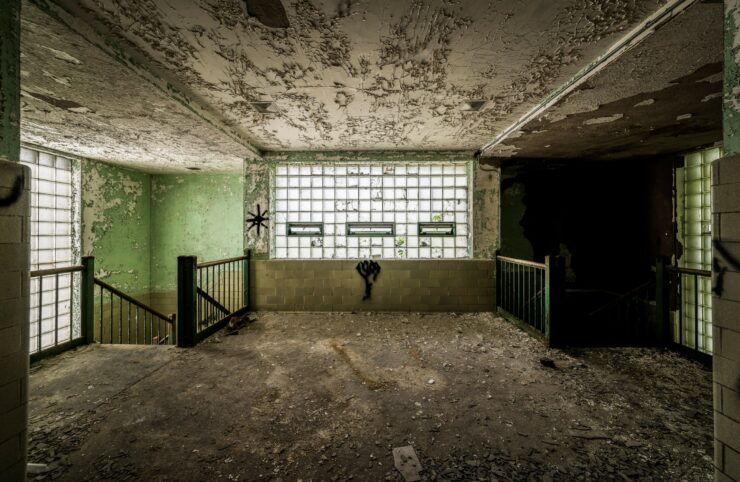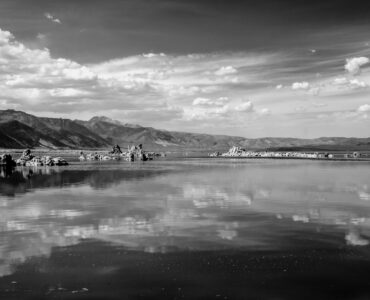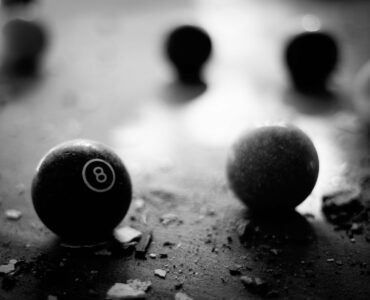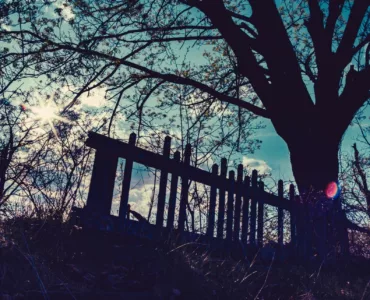Nau´heim treat`ment
1. (Med.) Orig., a method of therapeutic treatment administered, esp. for chronic diseases of the circulatory system, at Bad Nauheim, Germany, by G. Schott, consisting in baths in the natural mineral waters of that place, which are charged with carbonic acid, and the use of a graduated course of rest, physical exercises, massage, etc.; hence, any similar treatment using waters artificially charged with the essential ingredients of the natural mineral waters of Bad Nauheim. Hence, Nauheim bath, etc.
Glen Springs History
The Glen
The main building of this institution was built in 1872 by Judge George G. Freer, who was born in Marbletown, New York, in January 1809. A lawyer in nearby Ithaca, New York at the time, he first became involved with the history of the area when he came to Watkins in 1851 to defend the Last Will of Dr. Samuel Watkins, the founder of the village. After having successfully proved that Dr. Watkins’ widow, Cynthia Ann Cass Watkins, was the legal heir, he soon married the widow, who died shortly after, in October 1853, leaving Freer the sole owner of the vast estate. He quickly opened the first bank in the village and published the first newspaper. Freer went on to hold several civic offices: Village Trustee, President of the Village Board, Supervisor of the Town of Dix in 1863, and became a Judge and Surrogate of Schuyler County in 1869. Judge Freer died April 17, 1878.
One of Freer’s greatest ambitions was to open up the beautiful areas of the local Glen to the public. Under his ownership, the Glen at the southern end of the village began operation as a tourist attraction, called Freer’s Glen. It was later sold to Mordalven Ells, who opened it to the public in 1863. Ells, born in Fairfield County, Connecticut, in 1823, had moved to Watkins in the 1850s.
In 1906, the State of New York acquired the Glen and opened it as the first State Park with free admission. In 1924, it became one of the Finger Lakes State Parks, now under the control of the New York State Parks Department.
The Sanatorium
Glen State Park adjoined the site where Freer had built the “Lake View Hotel” to accommodate the tourists he had hoped to attract. This beautiful structure, built in the style of the Second Empire, was to be the nucleus of the Glen Springs Resort and Sanatorium. Freer’s venture, however, had never succeeded.
A search for oil on the property, however, led to a whole new future for the village, and led to the opening of the Glen Springs. When the drillers went down to a depth of 1,600 feet, what they struck was black, briny water, not oil. The drillers were disappointed, but, under scientific analysis, the water proved to have greater curative powers than those found at the Nauheim Springs in Germany, the leading spa of the day. Apparently there were several springs on that site which had been known for their medicinal properties as far back as when the Seneca people occupied the land.
Newspaper accounts of the find drew the attention of William Elderkin Leffingwell, who, with his cousin, Dr. James A. Jackson, ran the Jackson Health Resort in Dansville, New York. They had been searching for two years for a more suitable site for a new sanitarium. Leffingwell went to Watkins in 1890 to investigate the property. He was quickly convinced of the suitability of the site for a health resort, and formed a company to purchase it. In March 1890, the Glen Springs opened as a hotel and sanitarium. It quickly developed an international reputation and became a mecca for tourists seeking its curative waters.
Different springs were found to have different properties, and some provided running water throughout the hotel, while others were used for bathing. A two-story bath house was built with tiled floors and marble walls, which was attached directly to the hotel. In it the guests could enjoy a variety of bathing styles and water properties for different ailments. As soon as he had purchased the estate, Leffingwell made plans to expand the hotel, for which he hired several architectural firms in the region. He slowly expanded the property, till it grew from its original 20 acres to comprise 270 acres. On the grounds, gas wells provided heat for the buildings and food was grown to feed the guests and staff. Leffingwell died in October 1927. His family continued to manage the resort, but Glen Springs gradually faded in prominence. Finally the events of World War II caused the resort to lose many of its remaining clientage and it closed its doors on January 1, 1942.
Later uses
After the War had ended, Cornell University used the former resort as housing for its burgeoning enrollment of returning veterans. In 1949, it was sold to the Polish-American Province of the Order of Friars Minor, who founded St. Anthony of Padua Seminary, a facility for high-school age candidates to the Order. That institution closed in 1970, and, after years of neglect, the friars were able to sell the property for development in 1983.
The main building was demolished in March 1996 after a fire destroyed most of the structure.
My Adventure
Three or four times a year I host photowalks in New York State. These are free and it helps me connect with other photographers in and around the area. Part of what makes the photowalks such a good time is the interaction between myself and the other photographers. I not only get to interact and teach them new techniques, but I get to learn from them to by observation and conversation. During one such conversation with a fellow photographer I learned of Glen Springs. I am always interacting with people and hearing of places to shoot, some with great success, and others, not-so-much. I was really surprised to hear about Glen Springs because it is literally in my backyard. Funny how we sometimes miss the stuff right under our noses. The week following the walk I decided to give my buddy Louis Quattrini a call and see if we could go find this place. I really didn’t know what to expect but sometimes that’s what makes what I do so much fun.
We load up and after a very short drive we find this hidden gem.
My source had told me that I actually had another photographer friend that lived right next to the entry so seeing a house next to the lot, I walked over to see if anyone was home. Much to my surprise, and theirs, I found a guy and a girl sunbathing. I introduced myself and asked if they knew my friend the photographer and they did not. After a short conversation I asked if it was okay to go take some shots and they approved. They were even nice enough to point out how to go inside the building and check it out. It’s great when the locals are friendly!
I saunter back up the hill to find Lou already clicking away on his shutter. This building, a partial boiler house, and one gutted home are all that is left of this once-grand property. This first building is a “Gymnatorium”. A dual purpose building that served as a gym and auditorium for the Friars. Lou, points out the cross embossed on the front of the building which lead me to believe this was later construction that the Friars utilized for phys-ed and as it has a stage, entertainment.
As we make our way around the building a very cool scene opens up. The overgrowth of nature here is spectacular. Mix that in with some old decaying park benches and you have some very dramatic photography.
Upon entry we are greeted with the pungent odor of mold and mildew and our first view of the interior confirms it.
The massive gymnatoriums slat wood floor has buckled and warped from rain and water coming in from the open windows. While it was quite a cool visual, it is sad to see this happen to a hardwood floor.
By the pile of hardwood in the corner it looks as though someone was here trying to save it at one point.
One of the greatest things about exploring and photographing a place like this is the human factor. It always amazes me how things are frozen in time from when they were abandoned. This old bleacher is a perfect example. When I first saw this, all I could think of was being a kid in elementary school again.
Speaking of being in elementary school, my first claim to fame was starring in a play in 6th grade called “What, No Santa Claus?” and it was on a stage, like this one.
Upon closer look it seems someone was using the stage as an office of some sorts. From the stage I can see something interesting at the other end of the gym.
Nope, I’m not going in there….something…smells wrong. Next to the “bathroom” look to be an old phys-ed teachers office. Complete with a smashed out grated window. Not a lot of content here, I liked the backlight so I took the shot.
After some nosing around a bit I find a stairway to another floor.
I shot here in the late afternoon and the light coming through the buildings glass block windows was awesome. At least the blocks that weren’t broken by vandals.
Still on the same floor I make my way around a passage which ends up being a balcony of sorts that overlooks the gym. here you can really see the floor damage.
Off the balcony and around the opposite corner I find two surprises. One of them is this guy. He seems sad, maybe he’s lonely because no one hangs out here anymore.
The second surprise would be the one of the day. A full projectionist booth with two Simplex arc projectors!
These old projectors were loud and proud. The details and patina on these projectors made for some great HDR.
I have seen a lot of these arc projectors in my travels. They use carbon rods and a high current arc focused on a concave mirror to project the film onto the movie screen. They were hot, loud and took a lot of power to operate. Two projectors were used as only so much film would fit on the reels. Two small timing dots would appear at the corner of the film to alert the projectionist it was time to switch cameras. Projectionists back in the day were so good at this that most movie-goers never realized the switch which happened an average of 3 to 4 times per film. These were newer arc projectors and the power supply was really small compared to some of the refrigerator sized models I have seen. Couldn’t pass up taking a shot of it and the really cool power dial it sported.
Unfortunately, most of the neat items that you find in projection booths have been pilfered. This old Panavision film reel cap and broken reel drive belts were all that were left.
And just as I thought I had found everything in the booth I find this gem. How apropos.
Having REALLY run out of cool projector room items to shoot we made our way back to the entrance so that we could check out the rest of the grounds. Much to my surprise, on the way in, I completely missed what turned out to be my favorite shot of the day. This is the kinda stuff that I look for. An old imploded Zenith TV sitting nicely under a hole in the roof casting some killer back-lighting.
After making our way back out to the grounds we really go a feel for how much was really gone. Only one item from the original sanitarium remains and that’s the old boiler room stack.
There is one other building that I believe was part of the campus when it was owned by Cornell and that is this completely gutted house.
From what I can tell by the front door, this building housed Science Department Head Mr. Charley Belair.
I have tried to do some research on this gentleman but cannot find any additional information. Hopefully with the release of this story somebody will contact me with some information. That about does it for Glen Springs. I wish I could have seen it before vandals burnt down the main building. A lot of what I do is extremely dependent on timing. Discovering a site after it has been abandoned, yet before vandals and scrappers have had a chance to destroy it. Sadly, these days it is becoming harder and harder. Thanks go out to my photography fans for turning me onto this site. Hopefully I have done it justice.
As always, click on the photos to enlarge and please consider purchasing a print to support my work. Thanks!









































Amazing photos!
Great shots, a little depressing.
What an incredible post, pictures and story here, A.D. You’ve done a terrific job in documenting this place, an act that I find to be profound and important. Well done, good sir!
Thank you bro! More stuff to come. 😉
Colleen Callahan check this out!!!
Was this also the site of Glen Springs Academy which had an amazing prep school basketball team? “Fly” Williams was a really amazing player on that team. I believe John Pulos coached the team at one time.
Yes!